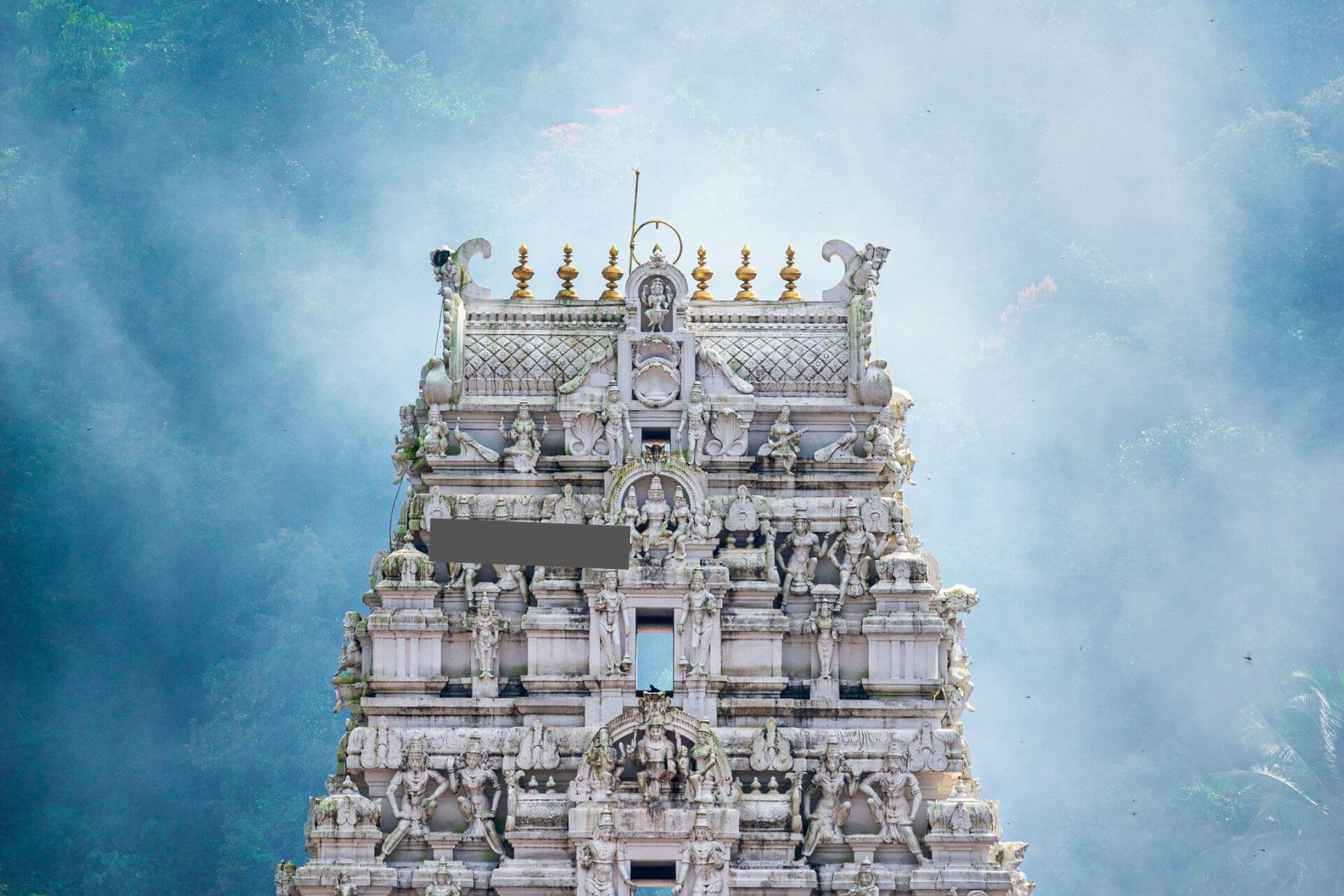Southern India is a land of majestic temples, standing elegantly for centuries. The architecture of these structures is awe-inspiring and intricate. From Dravidian to Vijayanagara style each temple has a unique architectural style. Elaborate pillars with intricate carvings and sculpted walls tell the story about legends long forgotten.
The temples in South India are incomparable to those in other parts of the country owing to their grandeur. Though dedicated to Hindu gods and goddesses, they also narrate the stories of valor of Hindu kings who built them.
Temples at Aihole and Pattadakal have elaborate architecture and are considered the seat of ‘Hindu Rock Architecture’. The exquisite decor of the Sabarimala Temple in Kerala mesmerizes the onlookers. Another architectural marvel is the Meenakshi Amman Kovil in Madurai. The vibrant exteriors lure tourists and photographers from across the globe. Thanjavur Temple in Tamil Nadu, Ramanathaswamy Temple in Rameswaram, and Airavatesvara Temple in Kumbakonam are other must-visit temples in South India.
Virupaksha Temple, Hampi
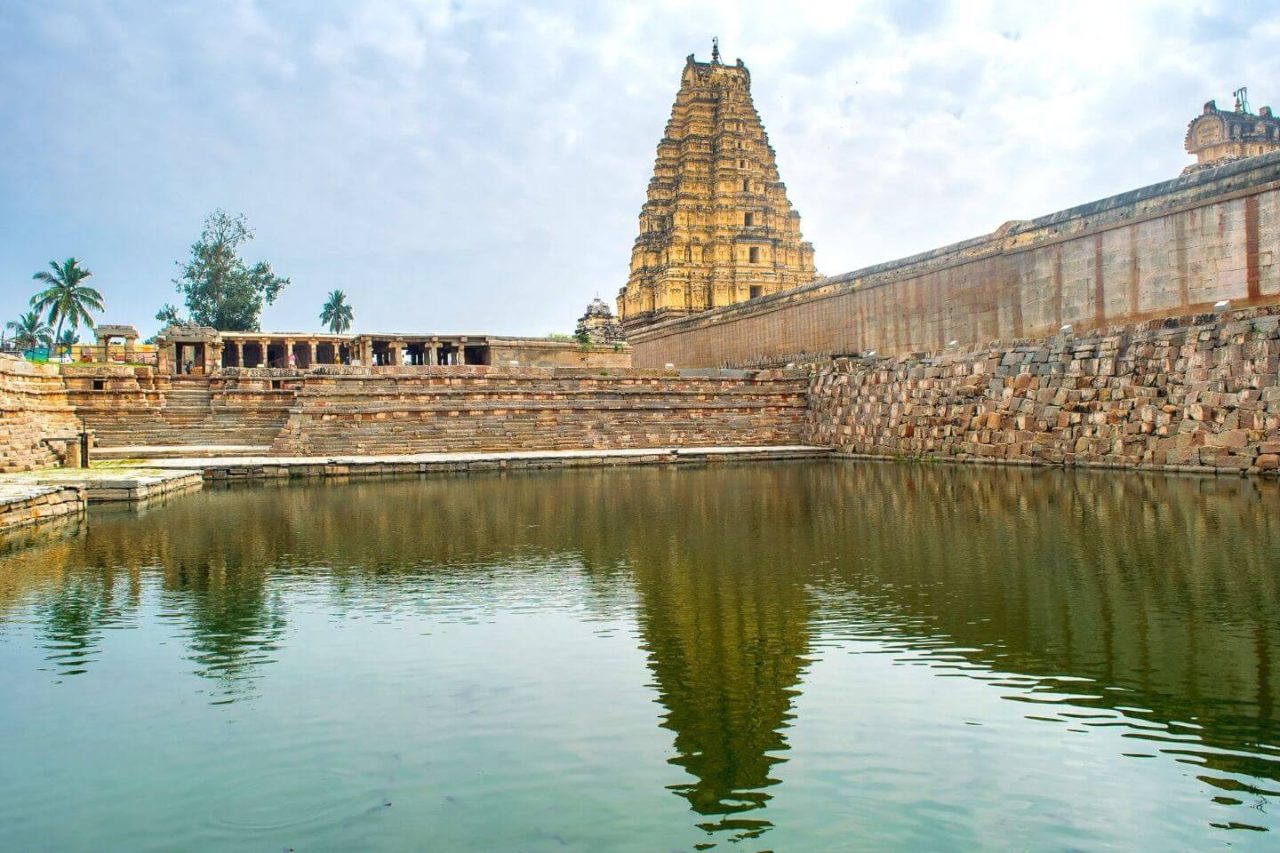
- Best time to visit: The temple remains open throughout the year but the best time to visit is from October to March.
- Major celebrations: Maha Shivaratri in February/March, Chariot Festival in March/April, Phalapuja festival in December.
Located on the banks of the Tungabhadra River, Virupaksha Temple in Hampi is a magnificent marvel of the Vijayanagara empire. Dedicated to Lord Shiva in his Virupaksha avatar, the temple was extensively famous for its tall gopuram and intricately carved architecture. It displays the power of various kings who ruled over the region during different times.
The Virupaksha Temple along with the ruins of Hampi is a UNESCO World Heritage Site. It is popular among history buffs, explorers, architecture lovers, and devotees. The Archaeological Survey of India has recognized that the temple was built by Queen Lokamahadevi to commemorate King Vikramaditya’s success in a battle.
The central pillared hall called Ranga Mandapa was decorated under the reign of Raja Krishnadevaraya. The elaborate designs indicate it was being used as an important location for weddings and other celebrations.
Ramanathaswamy Temple, Rameswaram
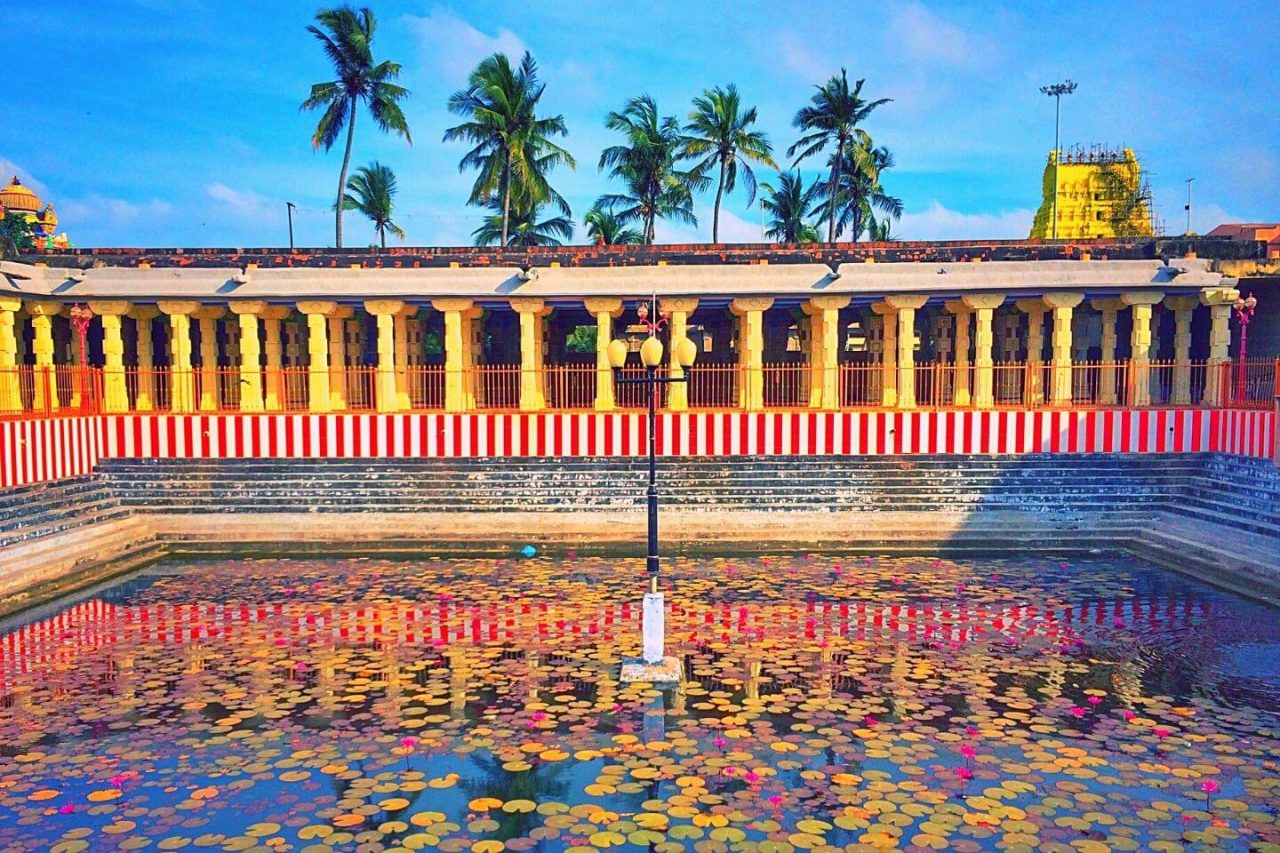
- Best time to visit: The temple remains open throughout the year but the best time to visit is from October to April.
- Major celebrations: Maha Shivaratri in February/March, Vasanthautsavam in May/June, Ramalinga Prathista Utsavam in June/July, Thirukkalyanam in July/August, and Arudra Darshanam in December/January.
Located on Rameswaram island in the state of Tamil Nadu, Ramanathaswamy Temple is dedicated to Lord Shiva. The temple also happens to be one of twelve sacred Jyotirlinga temples that exist across India and play an important role within Hinduism.
Rameshwaram is one of the holiest places in India according to Hindu mythology. It is the sacred place where Lord Rama created a bridge across the sea to Lanka.
The Ramanathaswamy Temple, located in the town of Srirangam on India’s east coast is one of the top places to visit in Rameshwaram. It is renowned for its magnificent Prakaras with massive sculptured pillars on either side. The longest corridor in this temple has been documented as being over 500 meters long.
Devotees perform sacred water offerings to honor their ancestors by taking a dip in the holy waters of Agnitheertham. You can also visit the Five-faced Hanuman Temple and witness the floating stone which was used to build the bridge between India and Lanka.
Ayyappa Temple, Sabarimala
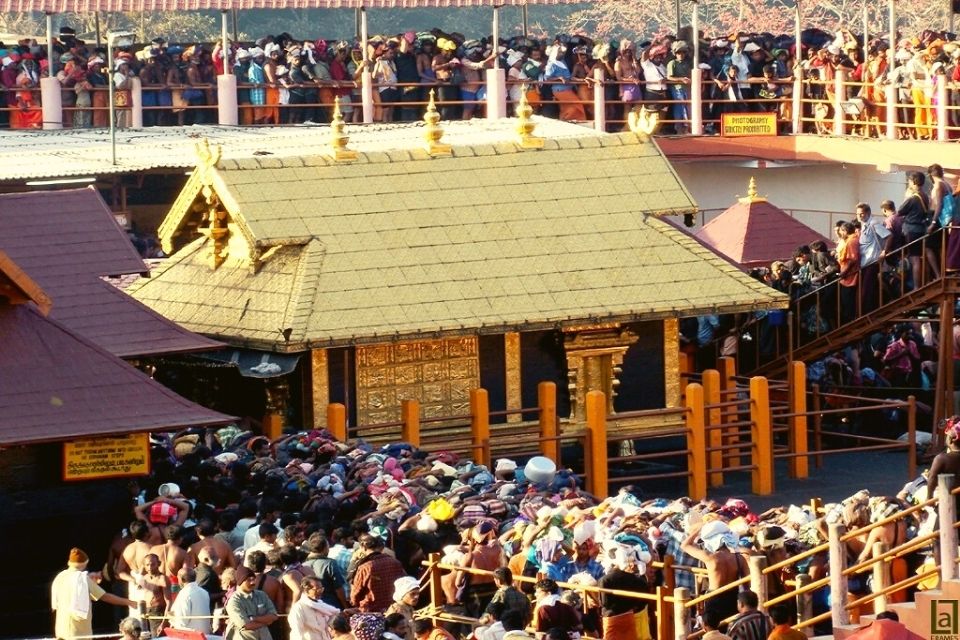
- Best time to visit: The temple remains open throughout the year but the best time to visit is from October to April.
- Major celebrations: Makara Sankranthi and Makara Vilakku in January, Onam in August, Mandala Pooja in November/December, and Vishu Vilakku in April.
The Sabarimala Temple is a pilgrimage site in India that attracts more than 30 million people annually. It is the largest religious institution of its kind and second only to Mecca when compared globally.
The Ayyappa Temple is located inside Periyar Tiger Reserve, Pathanamthitta, Kerala. The beautiful temple stands atop a hill at Sabarimala and is dedicated to Lord Ayyapa. The temple of Sabarimala is also known as Dharma Sashta and was founded by Sage Parshuram.
The Sabarimala Temple is an exquisite blend of Shaivism, Shaktism, Vaishnavism, and other Sramana traditions. The temple is situated amidst eighteen hills and dense forests named Poongavanam surround the holy site. People trek up the mountains from Plapalli village proceeding to Aangaamuzhi before making their way over to Sabarigiri Road for prayer.
Guruvayur Temple, Guruvayur, Kerala
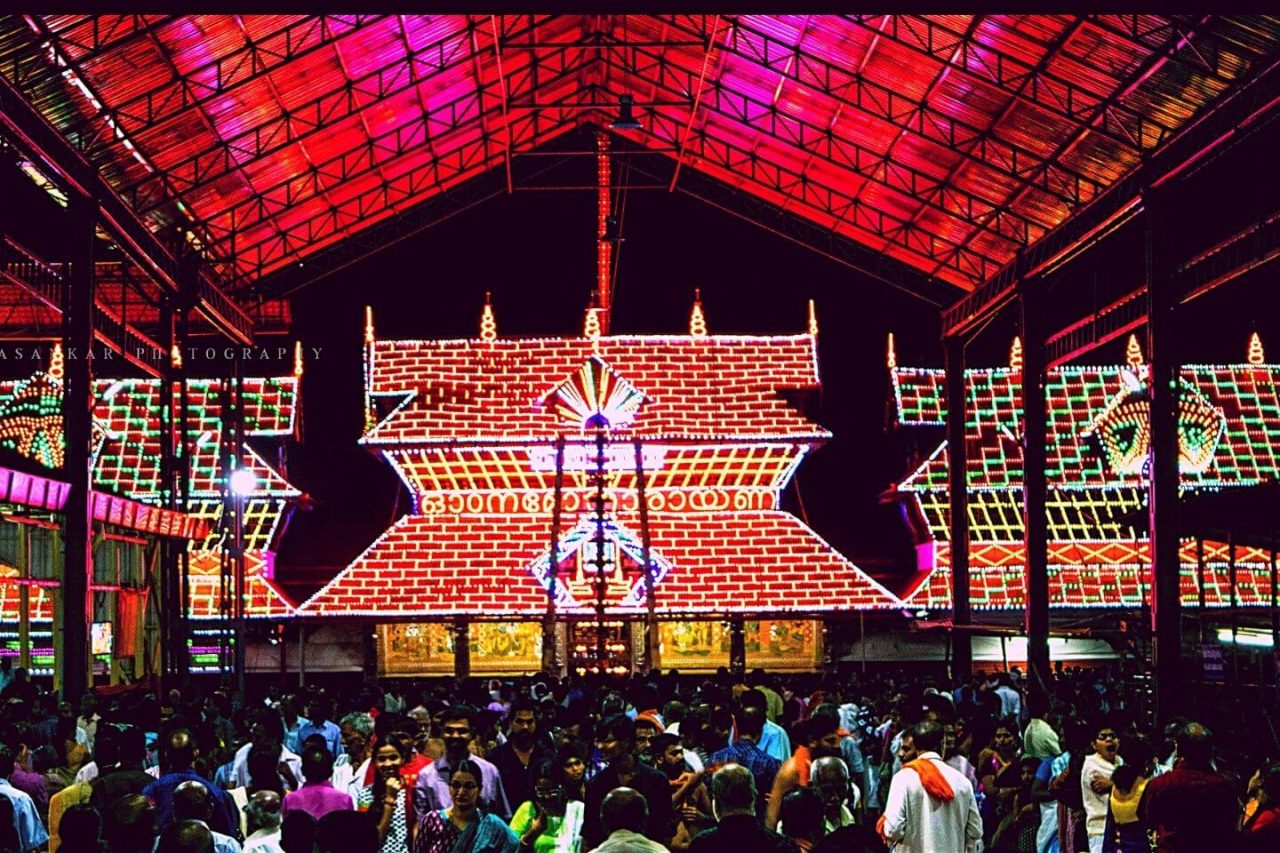
- Best time to visit: The temple remains open throughout the year but the best time to visit is from October to February.
- Major celebrations: Shri Krishna Janmashtami in August, Guruvayur Ekadasi in November/December, and Vishu in April.
Guruvayur Temple is one of the most famous and important temples in Southern India. It is only next to other religious places like Tirupati and Sabarimala. The temple has emerged as a powerful place for worshipers because it houses Lord Krishna who people believe to be an avatar (personal embodiment) or manifestation of Lord Vishnu.
The temple is believed to be among the 108 most revered shrines dedicated to Lord Vishnu, across the world. It is believed to be built by sages Vayu Deva and Guru Brihaspati in the direction of Lord Krishna.
The Guruvayur Devaswom elephant sanctuary is one of the largest in India, and it is just 3 km away from the temple grounds. The annual Guruvayur Festival held during February-March kick starts with an Elephant race and is a must-watch. The pristine Chavakkad Beach is around five km from Guruvayur.
Padmanabha Swamy Temple, Kerala

- Best time to visit: The temple remains open throughout the year.
- Major celebrations: Painkuni Festival in March/April, and Alppassi Festival in October/November.
One of the 108 Divya Desams, Sree Padmanabha Swamy Temple is located in Thiruvananthapuram. This temple has gold plated covering which adds to its spiritual charm. It is an important pilgrimage of Hindus and all devotees must follow the prescribed dress code.
Dedicated to Lord Padmanabha and incarnation of Lord Vishnu, it is one of the principal centers of Vaishnava worship in the dharma of Vaishnavism. Although its origins remain shrouded in mystery and obscurity, devotees believe it has existed for over 5000 years. The Bhagavad Gita also mentions Lord Krishna visiting this divine place while on his journey with Balrama who was his elder brother.

